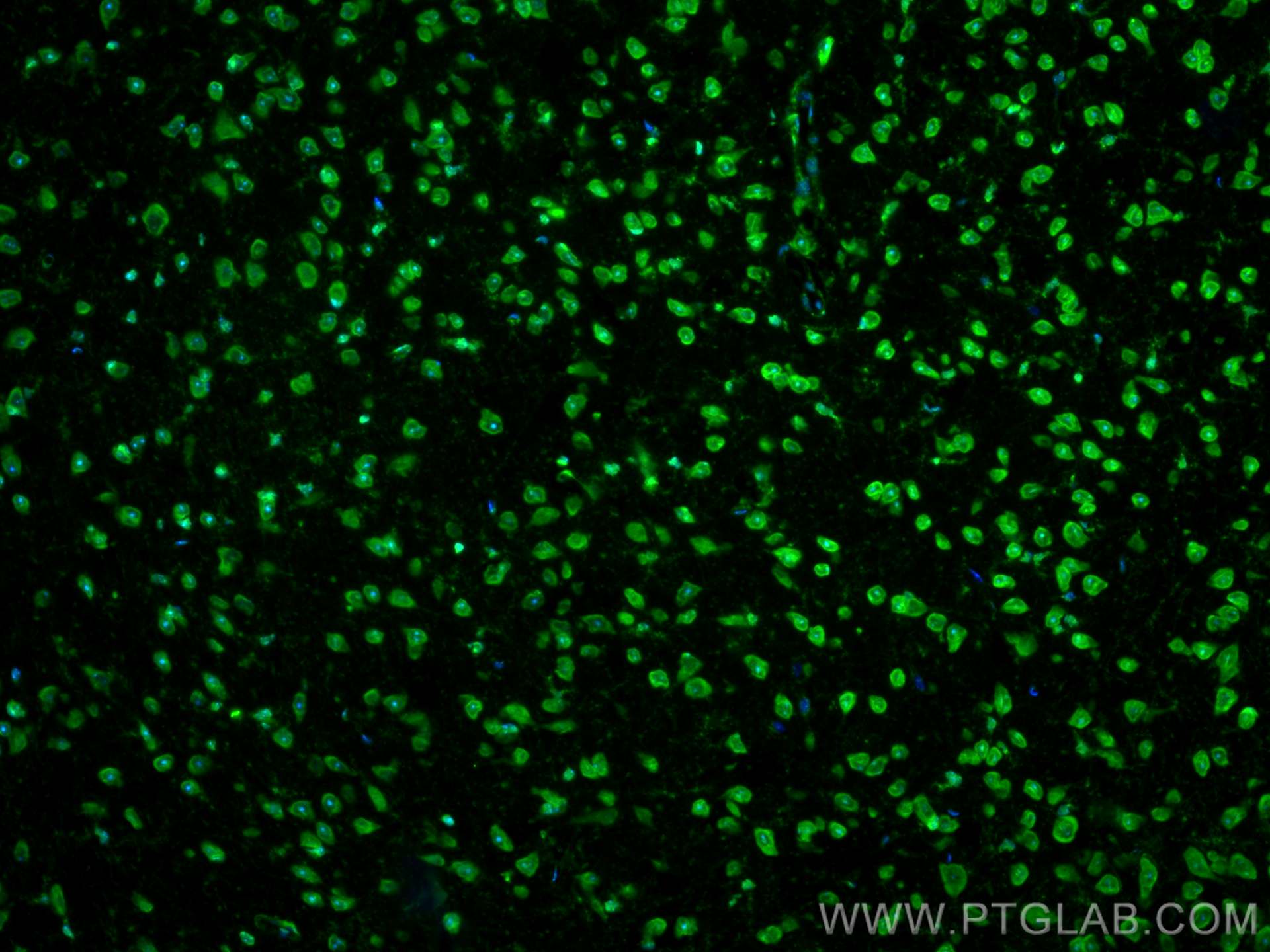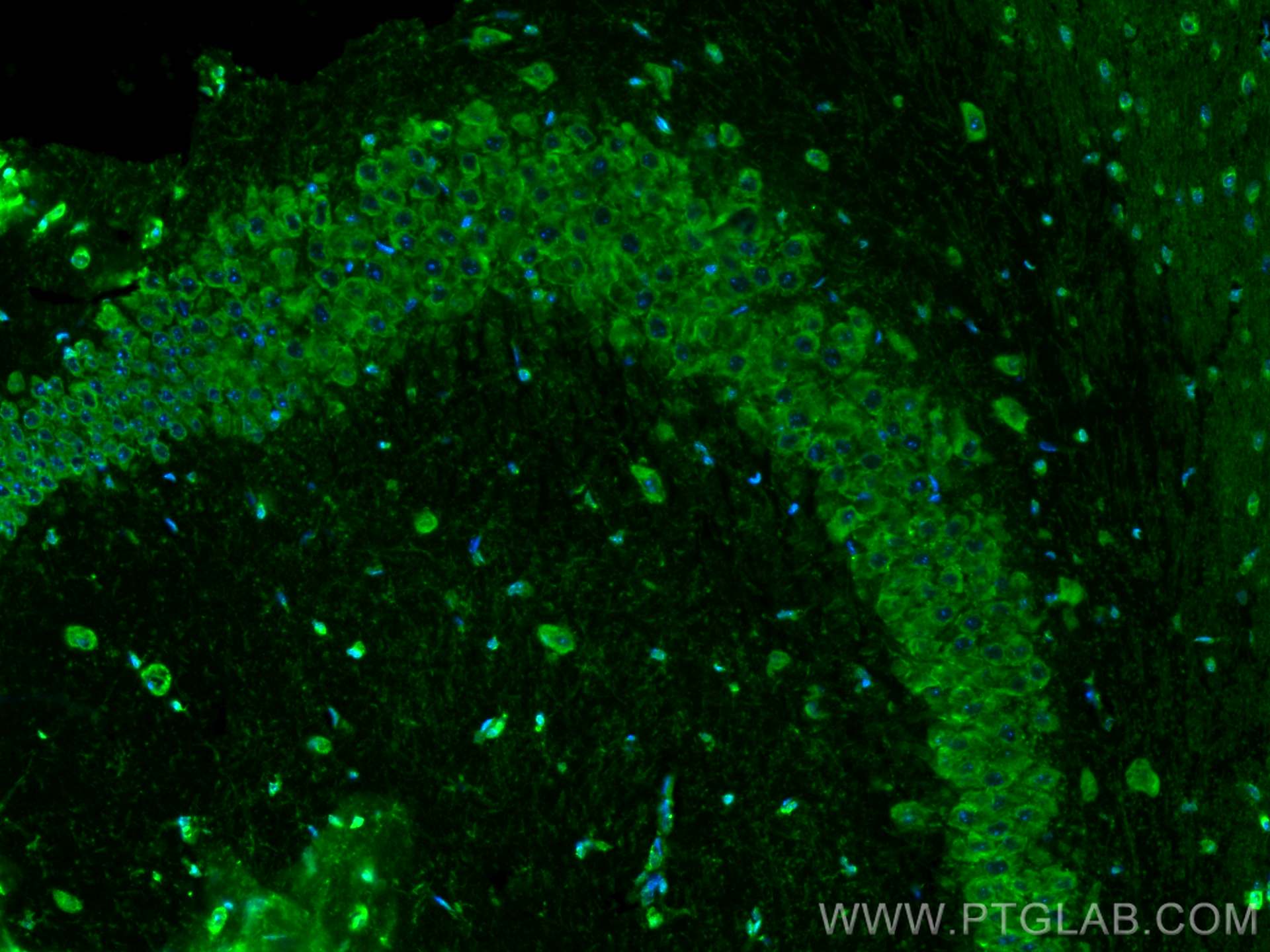CoraLite® Plus 488-conjugated MFSD2 Monoclonal antibody
MFSD2 Monoclonal Antibody for IF
Host / Isotype
Mouse / IgG2a
Reactivity
Human, mouse
Applications
IF
Conjugate
CoraLite® Plus 488 Fluorescent Dye
CloneNo.
2D2B4
Cat no : CL488-67965
Synonyms
Validation Data Gallery
Tested Applications
| Positive IF detected in | mouse brain tissue |
Recommended dilution
| Application | Dilution |
|---|---|
| Immunofluorescence (IF) | IF : 1:50-1:500 |
| Sample-dependent, check data in validation data gallery | |
Product Information
CL488-67965 targets MFSD2 in IF applications and shows reactivity with Human, mouse samples.
| Tested Reactivity | Human, mouse |
| Host / Isotype | Mouse / IgG2a |
| Class | Monoclonal |
| Type | Antibody |
| Immunogen | MFSD2 fusion protein Ag31028 相同性解析による交差性が予測される生物種 |
| Full Name | major facilitator superfamily domain containing 2 |
| Calculated molecular weight | 543 aa, 60 kDa |
| Observed molecular weight | 60 kDa |
| GenBank accession number | BC092414 |
| Gene symbol | MFSD2 |
| Gene ID (NCBI) | 84879 |
| Conjugate | CoraLite® Plus 488 Fluorescent Dye |
| Excitation/Emission maxima wavelengths | 493 nm / 522 nm |
| Form | Liquid |
| Purification Method | Protein A purification |
| Storage Buffer | PBS with 50% Glycerol, 0.05% Proclin300, 0.5% BSA, pH 7.3. |
| Storage Conditions | Store at -20°C. Avoid exposure to light. Stable for one year after shipment. Aliquoting is unnecessary for -20oC storage. |
Background Information
MFSD2, also named as MFSD2A, belongs to a large family of presumptive carbohydrate transporters with 10-12 membrane-spanning domains, is located at chromosomal position 1p34.2, and is conserved in evolution. It plays a role in thermogenesis via beta-adrenergic signaling pathway. It may be the main plasma membrane tunicamycin transporter. MFSD2 has three isoforms with MW 50 kDa and 59-60 kDa.
Protocols
| Product Specific Protocols | |
|---|---|
| IF protocol for CL Plus 488 MFSD2 antibody CL488-67965 | Download protocol |
| Standard Protocols | |
|---|---|
| Click here to view our Standard Protocols |



